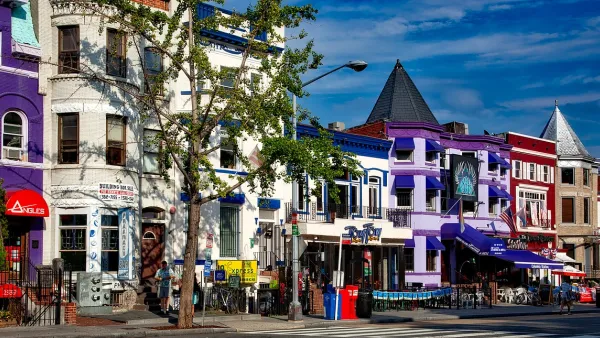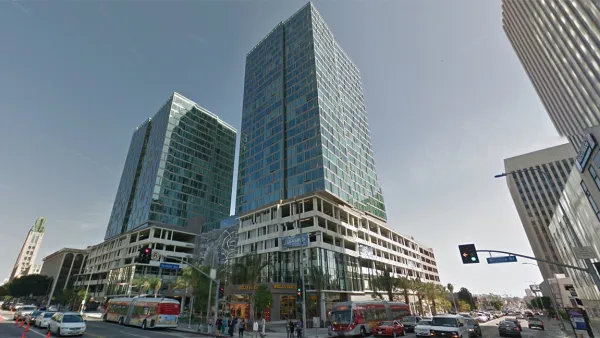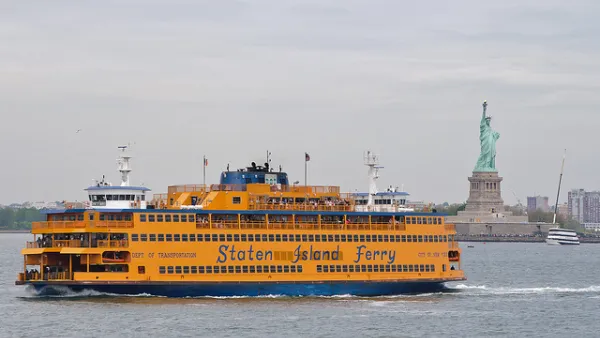Transit should make people's lives better, with density a key component of successful systems.

In an excerpt from his new book “Trains, Buses, People: An Opinionated Atlas of US Transit,” Christof Spieler reflects on what makes transit good, how it should improve people’s lives, and the role of density in developing successful transit systems.
Spieler says he uses transit in Houston and it works for him because he has easy access, service is frequent and efficient, and it takes him where he needs to go. He also points to a broader perspective on what goes into an effective transit system:
We need to talk about what matters—to focus on the quality of service, not the technology that delivers it; to talk about all kinds of transit riders, not just about a narrow target market; to understand that the transit experience depends on buildings and streets and sidewalks as much as it does on stations and trains; and, above all, to talk about getting transit in the right places.
Density is a key factor for transit, says Spieler. “The performance of a rail or BRT line is directly related to the surrounding densities. For example, the most successful light-rail systems in the United States—San Francisco, Boston, Philadelphia, Seattle, Newark, Jersey City, Buffalo, and Houston—serve large areas of over 10,000 people per square mile.”
He says locating transit in densely populated areas is crucial, even while acknowledging the challenges in doing so in the United States — shifts in density, misperceptions about which areas are actually dense, and the difficulties involved in building transit in dense places.
Spiegler also encourages increasing population density around transit:
Almost every transit line has room for new development along it: vacant lots, surface parking, aging single-story retail, underused industrial tracts. Even areas that already have density can be densified, and often the market supports dense new development in areas that already have an established residential market better than in relatively undeveloped areas.
He argues that transit-oriented development does well in the real estate market and urges cities to ease up on land use and zoning regulations that hinder this development and the density that comes with it. Rather, he says, cities should focus on policies that promote affordable housing in locations near transit.
FULL STORY: Excerpt: Many Cities Have Transit. How Many Have Good Transit?

Analysis: Cybertruck Fatality Rate Far Exceeds That of Ford Pinto
The Tesla Cybertruck was recalled seven times last year.

National Parks Layoffs Will Cause Communities to Lose Billions
Thousands of essential park workers were laid off this week, just before the busy spring break season.

Retro-silient?: America’s First “Eco-burb,” The Woodlands Turns 50
A master-planned community north of Houston offers lessons on green infrastructure and resilient design, but falls short of its founder’s lofty affordability and walkability goals.

Test News Post 1
This is a summary

Analysis: Cybertruck Fatality Rate Far Exceeds That of Ford Pinto
The Tesla Cybertruck was recalled seven times last year.

Test News Headline 46
Test for the image on the front page.
Urban Design for Planners 1: Software Tools
This six-course series explores essential urban design concepts using open source software and equips planners with the tools they need to participate fully in the urban design process.
Planning for Universal Design
Learn the tools for implementing Universal Design in planning regulations.
EMC Planning Group, Inc.
Planetizen
Planetizen
Mpact (formerly Rail~Volution)
Great Falls Development Authority, Inc.
HUDs Office of Policy Development and Research
NYU Wagner Graduate School of Public Service




























